Click on images to enlarge
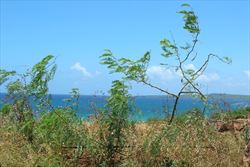
shrubby habit (Photo: Forest and Kim Starr, USGS)
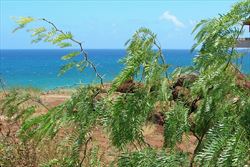
habit (Photo: Forest and Kim Starr, USGS)
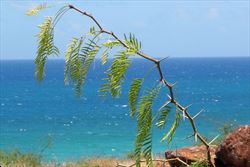
stems with large spines and twice-compound leaves with one pair of branchlets (Photo: Forest and Kim Starr, USGS)
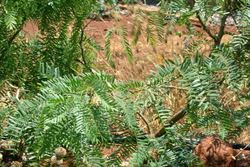
leaves with large and very elongated leaflets (Photo: Forest and Kim Starr, USGS)
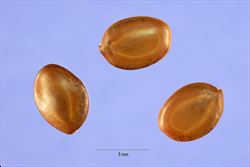
close-up of seeds (Photo: Steve Hurst at USDA PLANTS Database)
Scientific Name
Prosopis glandulosa Torr. var. glandulosa
Synonyms
Neltuma glandulosa (Torr.) Britton & Rose
Prosopis chilensis (Molina) Stuntz var. glandulosa (Torr.) Standl.
Prosopis juliflora Sw. (DC.) var. glandulosa (Torr.) Cockerell
Family
Fabaceae: sub-family Mimosoideae (New South Wales)
Leguminosae (South Australia)
Mimosaceae (Queensland, the ACT, Victoria, Tasmania, Western Australia and the Northern Territory)
Common Names
honey mesquite, mesquite, prosopis, Texas Mesquite
Origin
Native to southern USA (i.e. south-western Kansas, Oklahoma, New Mexico, Texas, Arizona, southern California and southern Nevada) and Mexico.
Naturalised Distribution
This species is widely naturalised in Australia, but has a scattered distribution. It is present in many parts of Queensland and well as in northern Western Australia and south-western New South Wales.
Also naturalised overseas in southern Africa, western Asia (i.e. Saudi Arabia), the Indian Sub-continent (i.e. India and Pakistan), south-eastern Asia (i.e. Burma) and tropical Southern America.
Notes
Honey mesquite (Prosopis glandulosa var. glandulosa) is regarded as an environmental weed in Queensland and Western Australia, and as a potential environmental weed or "sleeper weed" in many other parts of Australia. In addition to this, the mesquites (Prosopis spp.) are one of the 20 Weeds of National Significance (WoNS) in Australia.
Honey mesquite (Prosopis glandulosa var. glandulosa) is listed in the Global Invasive Species Database (GISD), and is regarded to be among the top 100 of the world’s worst invasive alien species.

